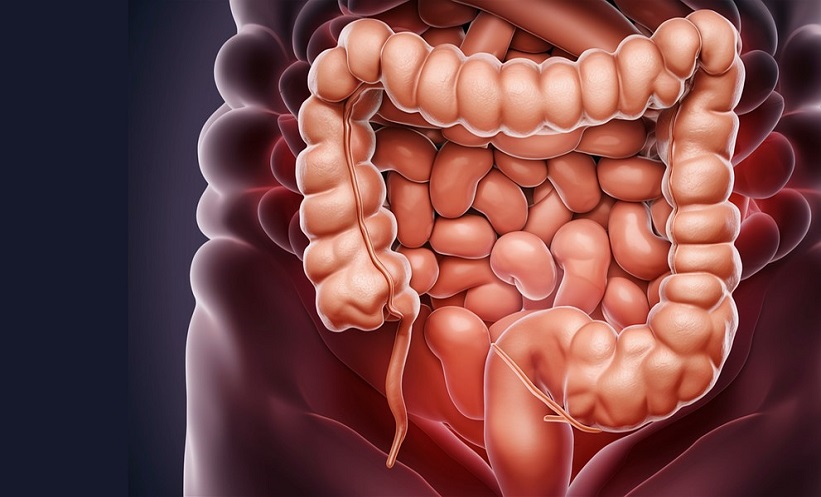The global population continues to rise, and by 2050, it is predicted that 2.1 billion people will be aged 60 years and over.1 With a rise in the population of older people comes an increase in the prevalence of chronic disease and disability.2,3 Within the healthcare community, there can be large variation in definition of the term chronic disease.4 The World Health Organization (WHO) definition of chronic disease is diseases that are not passed on from person to person. They are of long duration, and generally have a slow progression. The four main types are cardiovascular diseases, cancers, chronic respiratory diseases, and diabetes.5
Increases in the number of older people who live longer will exacerbate the burden of chronic disease, and place a higher demand on healthcare services.6 Based on current figures, it is estimated that 50% of the population of the USA have a chronic disease, which disproportionately accounts for 86% of healthcare costs.7 Radiology has not escaped these additional pressures. Wang et al.8 highlight that due to an ageing baby boom population, utilisation of diagnostic imaging has increased significantly compared to other healthcare services.8 Utilisation of imaging resources does not necessarily follow a linear relationship with population change. Gaget et al.9 reported that between 2009–2019, the Australian population aged over 65 years old increased by 39%, yet the utilisation of radiography in this age group unproportionally increased by 63%.9
Further commentary suggests that chronic disease definitions should acknowledge that they usually originate from complex causality, can be multifactorial in origin, and develop over a long period. Chronic diseases are also associated with a prolonged course of illness, which may be associated with other health complications, and can lead to functional impairment or disability.4 Osteoporosis and osteoarthritis have also been highlighted as chronic diseases, which again tend to arise in the later years of life.10,11 Transition between disease states has also been noted; for example, from acute to chronic or chronic to terminal disease states. Rates of chronic disease are a function of age, but also other factors, including lifestyle choices, such as tobacco and alcohol consumption.12-15 Access to healthcare also has a strong relationship between the incidence of chronic disease and clinical outcomes.16,17
Predicting the impact of changes in chronic disease rates on radiology is paramount. Over the past few decades, the contribution of radiology into modern medical practice has increased substantially.18 Radiology plays a clear and essential role in the investigation and management of many chronic conditions, and their resultant acute presentations.19 With the advent of minimally invasive procedures, radiology also plays an important and ever-increasing role in providing procedural guidance. 20
Moving forward is not simply about understanding overall chronic disease prevalence and likely future trends. Changes in the proportions of individual chronic diseases, and the evolution of clinical pathways for how diseases are diagnosed and managed are important. It is widely acknowledged that the proportion of different diseases within the overall category of ‘chronic disease’ will evolve. Radiology is also likely to contribute differently to diagnosis and management in the future. By way of example, since 1990, global smoking prevalence has declined by 27% for males and 38% for females.21
Trends continue to vary by region, with decline being limited in low- and middle-income countries. The impact of these trends should be modelled when predicting the future requirements for radiological imaging; for example, thoracic CT examinations, and the need for lung cancer screening. Lung cancer screening is broadly believed to be cost-effective for high-risk populations, yet has not been implemented in many European countries.22 Ischaemic heart disease is a leading cause of death worldwide, and management is guided by understanding the physiological significance of the coronary artery stenosis. Traditionally, the physiological significance of a stenosis can be estimated by invasive coronary angiography, and by determining the fractional flow reserve. Overall, this is a safe procedure, but is associated with arterial injury in <1% of cases.23 Non-invasive imaging of the heart, and the assessment of the physiological significance of a stenosis is now possible, and such examinations are on the rise.24,25 Several authors now argue that non-invasive imaging methods are equivalent to invasive catheter angiography, and thus, there are likely to be further increased demands on radiology, and less so on cardiology.26-28
In view of the significance of changes in the prevalence of chronic diseases, modelling by academic groups and policymakers is in operation. Within England, The Health Foundation have estimated that between 2019–2040, we will see rises in dementia (45%), chronic obstructive pulmonary disease (37%), heart failure (92%), chronic kidney disease (34%), cancer (31%), and diabetes (49%).29 Such disease groups rely on heavy involvement from radiology, but this has been known to change rapidly and significantly; for example, the rise in the use of PET-CT in cancer staging.30 This can be illustrated by comparing Australia to the UK; Australia has a population of approximately 26 million, and in 2017 had 46 PET-CT scanners.31 The UK, by contrast, has a population more than double (around 67 million), and in 2017 had 54 PET-CT scanners.31
Access to radiology is not without problems, and this precious resource is, regardless of healthcare system, not infinite.32 Even where access to physical imaging equipment is in abundance, there can be challenges in providing image acquisition, and with reporting. Shortages of radiographers and radiologists have been widely reported within the literature.33,34 Within the UK, a recent workforce census estimates that there is a 43% deficit in the number of required radiologists.34 Support from artificial intelligence (AI) has demonstrated potential in reducing some of these uncertainties. There are, however, still many examples of difficulties in successfully implementing AI within routine clinical practice.35 Growth in referrals, when combined with human resource challenges, is likely to further exacerbate problems in imaging chronic diseases over the short- to mid-term.
Access to appropriate and timely radiology when investigating chronic disease has demonstrated a positive impact on patient outcomes.36 Prompt access to radiology in the early stages of disease has, in many instances, demonstrated economic advantages, both for healthcare budgets but also society more widely. Changes in the way healthcare is being delivered have also demonstrated the effects of the utilisation of radiology services. A USA-based study in 2017 demonstrated that more fragmented care was independently associated with higher rates of radiology and other diagnostic tests than less fragmented care.36
The benefit from prompt radiological imaging is likely to increase with developments in imaging technology, and improvements in the safety profile of diagnostic examinations. Such possibilities are readily visible in terms of low-dose CT acquisitions, possibly with the same radiation doses as conventional radiographs. For example, emerging studies have documented paranasal CT sinuses examinations with doses as low as 0.08 mGy.37 Discussions on whether abdominal radiography could be substituted with ultra-low dose CT are progressing.38 Quantitative image analysis, for example, from dual-energy CT scanning, will increase radiology’s ability to contribute to the characterisation of disease, for example, in determining the composition of renal stones.39 Modern software algorithms have also permitted the minimisation of artefacts from metallic prostheses, i.e., total hip replacements.40 Not only will there be more patients to scan; more of them will have chronic disease, but the indications and contribution of radiology will also expand. With increases in the number of imaging examinations come a greater frequency of incidental findings. Studies evaluating brain MRI scans in older people have reported incidental findings in approximately 5% of patients.41 Identification of an unexpected finding can trigger additional medical care, including further diagnostic procedures and treatments, which, in some cases, may pose an additional risk to the patient.42
Challenges are undoubtedly ahead for radiology when contributing to the care of patients with chronic diseases. Radiologists, radiographers, other healthcare professionals, and funders must collaborate effectively to carefully plan and resource radiological diagnostics appropriately. Short-term decisions are required, but the problem will only get greater without an ambitious medium- and long-term vision. Such discussions are happening; for example, at the European Congress of Radiology (ECR) in Vienna, Austria, in February and March 2024. The theme of ECR’s 2024 congress was next-generation radiology, and it is fitting that the role of radiology in chronic disease was a significant part of the agenda. For over a century, radiology has been strongly based around key developments in technology. AI, robotics, cloud-based computing, and big data are just some of the current initiatives, which will continue to shape how we practise radiology. Radiology is also moving outside of traditional hospital-based departments. In the future, more and more chronic diseases will be imaged in the community, away from hospitals. Such endeavours are likely to increase the visibility of radiology, increase access, and again, strengthen demand.







